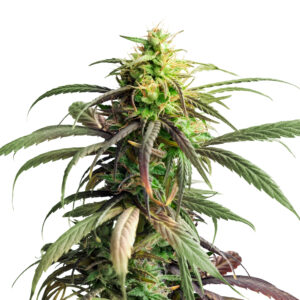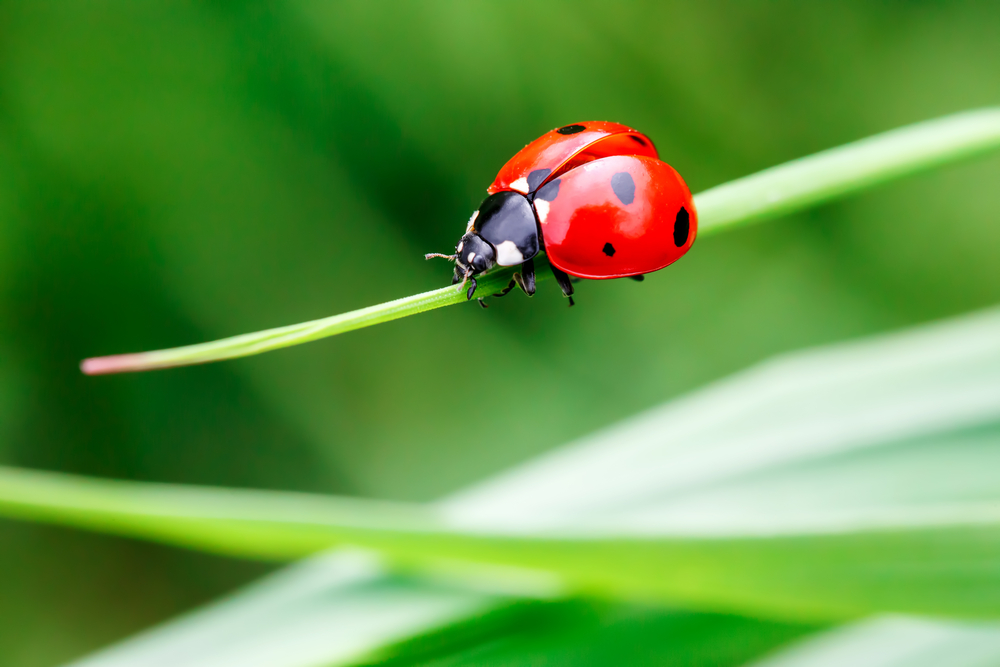Unfortunately, you sometimes get uninvited guests to your marijuana, growing party like spider mites. These uninvited little buggers aren’t just annoying, they can completely ruin your cannabis fiesta by killing off your crop.
Let’s get to know these critters a bit better so you can hopefully prevent them from ever showing up. Spider mites are a disaster wrapped up in a tiny (they’re a mere 1/50th inch) package with eight legs. They’re not considered insects, instead, they’re considered arachnids like spiders and they’re related to ticks and mites. Their oval bodies can be green, yellow to orange. The two-spotted spider mite will have obvious, two dark spots on its back. Its body is slightly transparent. They get the name “spider mite” from the web that they spin on your plants. Spider mites have ninja-like qualities as they creep up on you unnoticed until suddenly you see thousands devouring your plant.
Magic trick
The appearing act is no magic trick either. Their “magic” trick is the life cycle that allows them to reproduce at a bunny-high rate to quickly populate and dominate plants. In just 3 days spider mite eggs hatch. Only 5 days later they have already reached sexual maturity and they are reproducing fast. Millions of eggs are laid within a month and this cycle continues and worsens unless you step in to take control.
Females
Females lay their eggs on the underside of leaves. When the eggs hatch it becomes a larva. These larvae have round bodies and at that point only have 3 pairs of legs. After feeding for a couple of days they find a good spot to molt into the first nymphal stage. At this stage of their life, they say no to a driving license but celebrate with a fourth pair of legs. After feeding for another couple of days, they go and molt into the second nymph. Then lastly, after feeding again and resting, they molt into the adult stage. After reaching this stage they can live 2 to 4 more weeks. Because of their life cycles, it’s easy to believe that you killed off all the adult spider mites and fixed your infestation. However, the unmatured spider mites might still be feeding on your cannabis plant awaiting their next stage of life.
Organic matter
Although spider mites can be found in any growing setup, they are most common in soil due to the dead organic matter. Your best setup against spider mites is a hydroponic system. To be successful in eradicating a spider mite infestation, you need to catch the problem early on. They can be difficult to notice at first because they’re so small and it may not be until your plants are covered in webs that you notice what’s happening.
Routine inspections
Do routine leaf inspections, especially on the underside of the leaf. When they start making colonies you will see fine “spider webs” between your precious leaves. Look for small specks, sometimes yellow or white, on the leaves; these are the bite marks of the mite. If the infestation is bad then the entire plant will appear sickly and discolored. It will be worth it for you to take all necessary precautions to avoid spider mites altogether.
Quarantine
If you are going to bring new plants into your grow area then quarantine them for at least 2 weeks. Check them regularly, a handheld microscope comes in handy here. Keep your grow area clean; never have old leaves lying around. let me repeat -keep it clean!
Fresh air
It’s good to have fresh air circulating, but if the air is coming from outside then you should use a filter to keep bugs out. Your room temperature also plays a part. Mites like it toasty warm, so keep your room on the cooler side.
Beneficial mites
Organic compost mulch provides beneficial mites that eat spider mites. Ladybugs also eat spider mites. You can buy them if you already have an infestation, but they’re useless in terms of prevention.
Treatment options
There are some treatment options available if you need to go into battle with these mites. One fun thing to do is to vacuum those suckers right off the plant. Put the used vacuum bag in your freezer to kill them, then toss them out with the garbage. You can also spray a mix of water and alcohol (rubbing alcohol, duh!) onto the plants. Use at least 40% water in the mix. A mix of 1 tablespoon bleach in a gallon of water sprayed onto the affected areas also works. Do one of these methods for a few days, and switch to another method if you have a bad infestation. Even when you think you’ve killed them all off, do it again a few times to kill the ones that may have just hatched, yes you need to get medieval on their asses! Spider mites are a nightmare, but if you take the necessary precautions and check regularly you can save your plants and enjoy the crop you work so hard for…
Unfortunately, sometimes uninvited guests like spider mites show up, at your marijuana growing party. These tiny pests are not only annoying but can also completely ruin your cannabis crop. Let’s delve into the world of spider mites to better understand them and hopefully prevent their infestation.
Spider mites are part of the Tetranychidae family, which includes over 1,200 known species. They are known to infest a wide range of plants, including vegetables, fruits, ornamental plants, and, of course, cannabis. These tiny pests thrive in warm and dry conditions, making them a common problem in indoor and outdoor gardens.
Prevention is key when it comes to managing spider mites. Here are some strategies to help you avoid an infestation:
If preventive measures fail and you find yourself dealing with a spider mite infestation, prompt action is necessary to prevent further damage. Here are some additional control methods:
Regular monitoring and early intervention are crucial in managing spider mites effectively. By implementing preventive measures, encouraging beneficial insects, and taking swift action when necessary, you can minimize the impact of spider mite infestations on your cannabis crop.
This revolutionary product is a powerful mixture of plant extracts that will safeguard your plants without harming the environment or compromising your health.
With SPINT-OFF, you can have peace of mind knowing that all ingredients are listed on the international OMRI list and are approved for use in organic agriculture and horticulture. This means you can protect your plants while staying true to your commitment to sustainability and organic practices.
But it doesn’t stop there. SPINT-OFF is not only effective; it’s also safe and friendly to everyone involved. As a gardener, farmer, or cannabis enthusiast, you can use SPINT-OFF without the need for any protective equipment. No masks, no gloves. It’s that safe.
What’s more, SPINT-OFF leaves no residue and has no resistance, ensuring your plants are clean and healthy. Within just 7 days, your plants are residue-free and ready for consumption. Plus, SPINT-OFF is a 100% vegan product, aligning with your ethical choices.
Don’t let spider mites take over your garden. Take control with SPINT-OFF and experience the organic, effective, and animal-friendly solution. Visit the link below for more information:
Discover the power of SPINT-OFF
Protect your plants, protect the environment, and enjoy the bountiful harvest. Order SPINT-OFF now and witness the difference it can make.













Related Posts

Caterpillars are one of the most destructive pests that marijuana growers struggle with on a daily basis. These small, destructive pests are able to devour a small area filled with marijuana plants in a matter of days. When your harvest is at stake, it is important to learn how to get rid of caterpillars as quickly and easily as possible.

As a cannabis grower, you can have to deal with a lot of hassle. For example, you can suffer a lot from insects and other annoying little animals. You naturally want to protect your valuable plants against that, but you prefer not to use heavy, pesticides. Fortunately, there are often biological solutions that are a lot friendlier to your plant and the environment.

Garden pests really are a pain, and if your garden is a cannabis one, they are arguably even more so. One of the most common pests in cannabis grow are leafhoppers, tiny insects that can really harm your plants. Here is a handy little guide on how to spot them, and how to fix your issue if you have one: